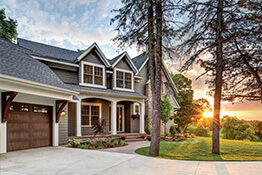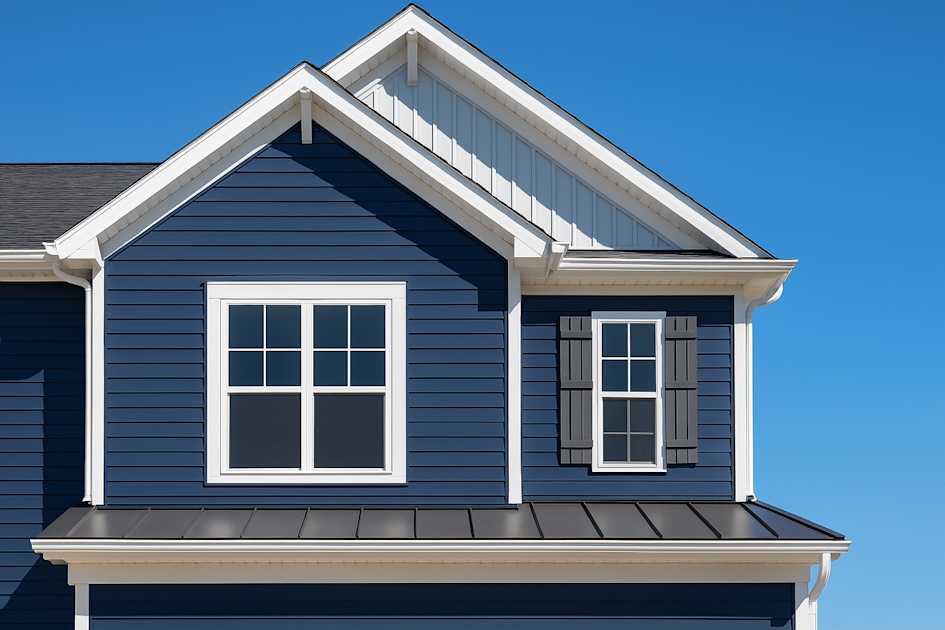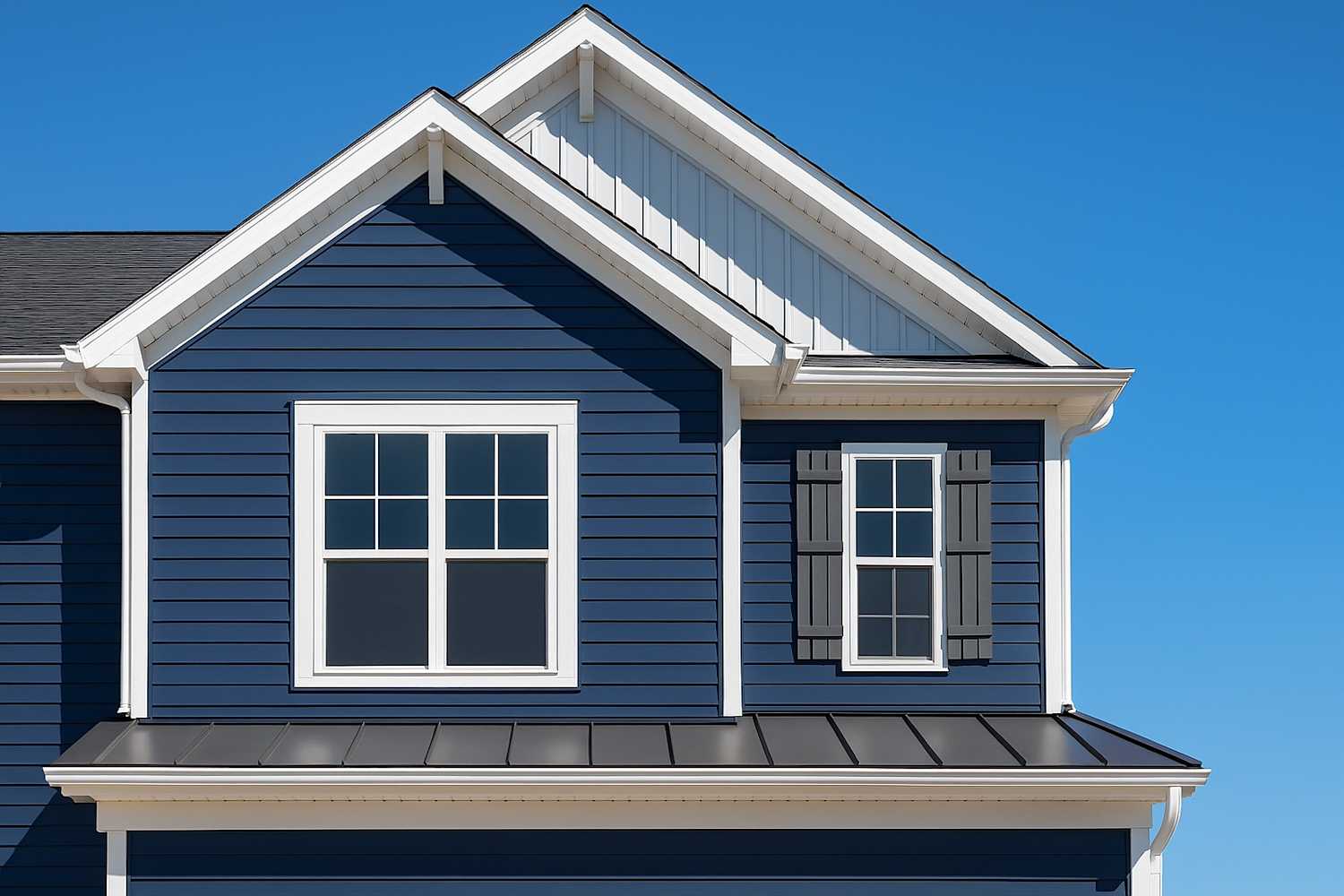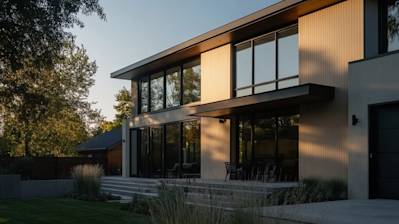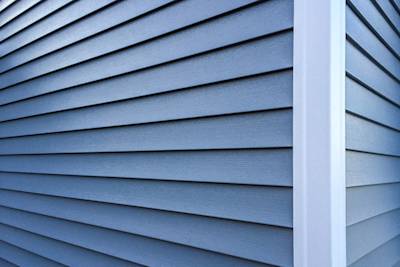Dutch lap siding, known for its rustic charm, durability, and versatility, has been a trusted choice for American homeowners for centuries. This article sheds light on a variety of facets to the Dutch lap siding, allowing you to make an informed decision when considering siding options for your home.
Unpacking Dutch Lap Siding
Dutch lap siding, also known as German siding or cove lap siding, is a type of drop siding featuring a bevel cut that imparts rugged beauty and character. Prominent in American colonies, this exterior design element, originally crafted from wood, holds a timeless appeal that translates well into today's modern materials.
The Unique Appeal of Dutch Lap Siding
There's certainly a reason why Dutch lap siding is widely embraced by architects, builders, and homeowners. Its board's top part is thinner, while the bottom part is thicker. This hand-crafted design and the shadow line it casts impart an attractive, rustic look to any home.
Impression of Depth Era
The design details in Dutch lap siding construction create an illusion of depth, adding visual interest and architectural detail to the home exterior.
Versatility
Dutch lap siding is versatile enough to seamlessly blend with the style of virtually any home, from contemporary designs to more traditional or rustic aesthetics.
Durability
Because of their tight fitting and overlap, Dutch lap sidings offer a durable solution, which is highly resistant to weather extremities.
Materials Used in Dutch Lap Siding
While traditional Dutch lap siding was made from wood, modern technology has allowed it to be produced from an array of different materials.
Wood
The original material for Dutch lap siding, wood offers a classic, warm, and natural look. However, it requires careful maintenance to prevent rot, pests, or warping.
Vinyl
Vinyl Dutch lap siding is a popular choice due to its durability, low maintenance needs, and wide variety of styles and colors.
Fiber Cement
Constructed to mimic the look and feel of wood but without the downsides, fiber cement gives a more authentic look while requiring minimal maintenance and offering increased durability.
Installation and Maintenance of Dutch Lap Siding
Installation of Dutch lap siding is best left to professionals to ensure it can withstand seasonal changes and provide a tight seal against elements. As for maintenance, it largely depends on the material used.
- Wood Siding - Requires regular painting and sealing to prevent moisture damage, pests, and warping.
- Vinyl Siding - Simply requires occasional washing with a soap solution to remove dirt and mildew.
- Fiber Cement Siding - Requires occasional painting to maintain its look and wrist off wear and tear, but less often than wood.

Frequently Asked Questions about Dutch Lap Siding
What Materials are Used for Dutch Lap Siding?
Dutch lap siding could be constructed from a variety of materials. The most common of these include wood, vinyl, and fiber cement. Each material lends itself to a unique appearance and comes with its own set of characteristics in terms of longevity, maintenance, and cost.
Is the Installation Process of Dutch Lap Siding Complicated?
Not necessarily. Although the installation of dutch lap siding may be a bit more intricate than other siding styles, with the overlap at the top of each board, many professionals have significant experience with this type of installation. If you’re interested in a DIY project, it’s not beyond the reach of a seasoned home improver, but it’s essential to follow specific instructions and take time to do the job well.
How is Dutch Lap Siding Different from Traditional Clapboard Siding?
While similar, the main difference lies in how each board is cut. Traditional clapboard siding features a simple, flat plank, whereas Dutch lap siding is crafted with a concave curve at the top of each board, providing a distinctive shadow line that gives the siding its unique charm.
What is the Maintenance Requirement for Dutch Lap Siding?
The maintenance of dutch lap siding largely depends on the material used. Wood siding requires regular painting or staining to prevent decay, whereas vinyl and fiber cement options demand little more than the occasional clean to keep them looking their best.
Can I Paint Over My Dutch Lap Siding?
Certainly! Painting Dutch lap siding can refresh its look, hide stains, and extend its life. Always make sure the surface is clean and dry before painting. Also, choose high-quality exterior paint specifically designed for the type of Dutch lap siding material you have.
How Durable is Dutch Lap Siding?
Dutch lap siding is comparatively durable, but the actual longevity depends on the material used. While wood variants may require more regular upkeep, vinyl and fiber cement options may last for many decades, often maintaining their appearance without requiring repainting or replacement.
Is Dutch Lap Siding Suitable for Every Climate?
Generally speaking, yes! Dutch Lap Siding fares well in several climates. However, it's crucial to consider the material. For example, fiber cement dutch lap siding best withstands hotter climates, whilst vinyl might perform better in colder weather.
Is Dutch Lap Siding Cost-Effective?
From a long-term perspective, yes. While the initial costs of Dutch lap siding can be higher than alternatives such as traditional clapboard siding, its durability, low maintenance requirements, and potential to enhance your property's value make it a cost-effective choice in the long run.
Are There Oracle Dutch Lap Siding Reviews?
Yes, you can find various Oracle dutch lap siding reviews online. Many users highlight the quality, aesthetics, and longevity of the product as its key strengths.

Pros of Dutch Lap Siding
Versatility and Design Options
Wide Array of Colors and Textures
Dutch lap siding is renowned for its extensive array of colors and textures, which allows homeowners to choose a variety that complements the look and style of their homes. It is available in almost every color palette, giving you ample choices to select the best match.
Variety of Materials
Dutch lap siding comes in diverse materials, such as vinyl, aluminum, and wood. Each of these materials has unique characteristics, giving homeowners a further degree of choice when considering the overall design, cost, durability, and ease of maintenance.
Rich Aesthetic Appeal
One of the main advantages of Dutch lap siding is the aesthetic appeal it offers. Its design gives a hand-carved look that presents a unique shadow line between the boards, creating an attractive and tiered look, which enhances your home's curb appeal.
Performance and Durability
Weather Resistance
The overlapping design of Dutch lap siding excellently sheds water, making it highly weather-resistant. It can protect your home from heavy rains or snow, and it can withstand high winds better than most other siding types.
Long-lasting
Regardless of the material it is made from, Dutch lap siding is proven to be highly durable and can retain its appearance and structural integrity for many years with little maintenance required.
Energy Efficient
Especially for insulated versions, Dutch lap siding provides good insulation qualities. It helps keep your house warm in winter and cool in summer, thus increasing the energy efficiency of your home.
Installation and Maintenance
Easy Installation
The Dutch lap siding is easier to install than most other types of siding, in part due to its lightweight nature. Its design allows it to interlock easily, speeding up the installation process.
Ease of Maintenance
Depending on the material type, Dutch lap siding usually requires minimal maintenance. For instance, the vinyl type can be easily cleaned with a hose or power washer.
Cons of Dutch Lap Siding
Cost
Initial Investment
The initial cost of Dutch lap siding can be higher than some other sidings, such as traditional clapboard siding. This is particularly true when opting for premium materials like real wood or higher-end vinyl.
Installation Considerations
Need for Professional Installation
While the installation of Dutch lap siding might be considered easier than some other varieties, it is still recommended to have it installed by professionals. Improper installation could lead to problems like water damage or air leakage.
Maintenance Issues
Repair Challenges
While Dutch lap siding is durable, potential damages or defects will require specific care. Since sections of siding are overlapped, replacement of a single piece can be tricky and may require the removal of adjacent boards.
Occasional Painting
If you choose wood Dutch lap siding and wish to maintain the natural appearance of the wood, you’ll have to repaint or re-stain periodically, which can raise the overall maintenance cost and time.
Possible Health Hazards
Vinyl Siding Concerns
If you opt for vinyl Dutch lap siding, there are concerns regarding the health hazards of vinyl. Vinyl manufacturing and disposal processes can release harmful toxins to the environment. In case of a house fire, vinyl siding can produce toxic smoke.
Aesthetic Constraints
Uniform Look
While many appreciate the uniform look of Dutch lap siding, others might consider it too repetitive, particularly on larger homes. The lack of variation might be a downside for those seeking a more rustic or varied aesthetic.
Risk of Fading
With certain materials, particularly vinyl, there's a risk of color fading over time. Premature fading can lower the aesthetic appeal of your Dutch lap siding.

Myths and Misconceptions About Dutch Lap Siding
Dutch lap siding has been widely embraced for its aesthetic appeal and durability in protecting the external parts of buildings. Despite its popularity, many myths and misconceptions exist around this home design element. This section will clear up some of the most common misconceptions and provide accurate information about Dutch lap siding.
Myth 1: Dutch Lap Siding Is Difficult to Install
Many people believe that Dutch lap siding is tricky to install due to the overlap feature in its design. While this might slightly complicate the process compared to installing other types of siding, it absolutely does not make it an impossible undertaking.
Reality
Even though some expertise is needed in accurately installing Dutch lap siding, the process isn't as challenging as some may believe. Most manufacturers provide comprehensive installation guides that make the process straightforward. Professionals in siding installation also possess adequate skills to handle Dutch lap siding with precision.
Myth 2: Dutch Lap Siding Is Only for Old or Traditional Homes
Another common misconception is that Dutch lap siding is only suitable for use on older, more traditional homes. This stems from the fact that Dutch lap primarily was used in historical architecture.
Reality
Today’s Dutch lap siding maintains the classic beauty that connects it with history. But, it has also evolved to accommodate modern design tastes. With the broad spectrum of textures and colors available, Dutch lap siding can maintain the aesthetic appeal of both traditional and modern homes.
Myth 3: Dutch Lap Siding Is Unsustainable
The presumption here is that because Dutch lap siding was developed traditionally, it must be environmentally unfriendly.
Reality
Dutch lap siding manufactured today uses sustainable materials. Many manufacturers produce Dutch lap siding from recycled materials, making it a more sustainable choice. Additionally, its longevity reduces the need for replacement, thereby reducing environmental impact.
Myth 4: Dutch Lap Siding Is Prone to Damage
It's a common misconception that Dutch lap siding is highly susceptible to damage from weather elements.
Reality
Dutch lap siding provides excellent protection against harsh weather conditions. It performs well under exposure to high levels of humidity, heat, and cold, demonstrating exemplary weather resistance. It also keeps out moisture remarkably well, reducing the chance of mold and rot.
Myth 5: Dutch Lap Siding Requires Constant Maintenance
Many homeowners are under the misconception that Dutch lap siding requires frequent, high-intensity maintenance.
Reality
Whilst maintaining any type of siding is essential to increase its longevity, Dutch lap siding doesn't require rigorous or costly maintenance. Regular cleaning to remove dirt, and occasional inspections for damage, will keep this siding in tip-top condition.
Myth 6: Dutch Lap Siding Is Expensive
A common belief among potential buyers is that Dutch lap siding is more expensive than other types of siding.
Reality
While it's true that the costs of Dutch lap siding may vary depending on factors like material and size, it is not inherently more expensive than other options. In many cases, considering its durability and the long-term savings from its low-maintenance needs, Dutch lap siding can be a cost-effective choice for homeowners.
Myth 7: All Dutch Lap Siding Is the Same
Another common myth sees all Dutch lap siding as identical, regardless of the manufacturer.
Reality
Dutch lap siding differs greatly in quality and style, and will vary between manufacturers. This variety is what allows homeowners to choose a Dutch lap siding that best suits their personal preferences and the architectural style of their house.
In summary, when considering Dutch Lap Siding for your home, it’s essential to separate fact from fiction. As we've seen, many of the common myths simply do not align with the realities of this sturdy, versatile, and aesthetically pleasing siding option.
Summary
All in all, Dutch Lap Siding has always been a popular choice for homeowners. With its unique design and trusted durability, it has proven itself to be a usual furniture ally for the ages. Many people just feel attracted to the distinctive shadow line Dutch Lap Siding gives off, which creates a hand crafted feel, adding character to any dwelling.
Indeed, Dutch Lap Siding isn't just a pretty face. Beyond its pleasing aesthetics, it offers remarkable benefits that many other siding options can't match. It's crafted to be weather resistant, providing protection against harsh climates, while its overlapped design greatly contributes to shielding homes from water seepage.
Lastly, it pays to mention the practical side of Dutch Lap Siding. Yes, it's durable and good-looking, but it's also easy to install and maintain. This makes it a popular choice for a do-it-yourself project for those homeowners who are a little bit handy. So, if you need a siding that offers a handsome exterior, robust protection, and a project you could be proud to say you've done yourself, Dutch Lap Siding just might be your best bet.
About US Quality Construction of Columbus
US Quality Construction of Columbus is your trusted local construction company based right here in Columbus, OH. We pride ourselves on delivering top-notch construction services to our community. With a team of experienced professionals and a dedication to superior craftsmanship, our focus is always on meeting your needs with the highest level of quality. Known for our reliability and attention to detail, we handle a diverse range of construction projects, whether residential or commercial. When you collaborate with us, you're not just getting a contractor, but a committed partner who's eager to bring your vision to life. Let's build something great together!
Tags: siding, home improvement, exterior design,
